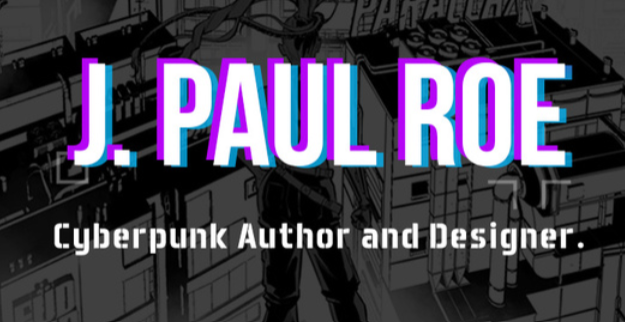Most writers have likely been in an argument about today’s topic.
Whether you’re for or against the adverb or emotive dialogue tag, you know the rote advice for budding novelists is to avoid them.
To summarize the folk wisdom:
- Words that end in -ly are awful things.
- You should only use the “said” or “asked” dialogue tags (and maybe a few others).
I’ve heard lecturers from Stephen King to Brandon Sanderson agree on these points, though sometimes with caveats like the catchall “rules are meant to be broken”.
I agree that all rules for writing shouldn’t be set in stone, inasmuch as the very idea of “style” requires a deviation from the rules. If we all followed the countless maxims and guides to the letter, there wouldn’t be much room for style to emerge.
For example, my own style is heavily influenced by many years of writing for blogs. You’ll notice that my novels tend to have a lot of white space, and I avoid writing paragraphs that exceed three sentences. I’ve had critiques come back where the reader called this out as an error — a blatant rules violation that demanded to be fixed. I don’t agree, because I write this way for a very specific reason. I can defend the decision.
And that’s the thing with style. It has to emerge from a place of knowledge. You don’t want to be a writer who makes legitimate mistakes and defends them as stylistic choices! One must learn how to do something the right way before they can trust themselves to break the rules.
I’m reminded of the Chesterton’s Fence heuristic, a little thought experiment that’s used to illustrate this notion. It states:
Do not remove a fence until you know why it was put up in the first place.
While this hypothetical fence seems to get the most airtime in the political realm, I’ve found it to apply to nearly every situation that involves challenging the established way of doing things.
For writers, that means understanding why these rules we hear all the time are in place. Why are adverbs so bad? Why can’t I use ‘she exclaimed’ as a dialogue tag?
In my critiques, I strive not to be a aphorism-spewing parrot that just leaves ambiguous notes like “show, don’t tell” without some guidance. The same goes for advice against adverbs and Said Bookisms, a term for flowery dialogue tags like ‘she roared’ and ‘he announced’ — just pointing them out isn’t enough.
I wanted to write this article so that I could guide fellow writers to it for the in-depth explanation of my thoughts. (Otherwise, I will have to keep writing it out over and over again. Adverbs and dialogue tags come up a lot.)
Let’s get started.
Why Writers Shouldn’t Use Adverbs
Can an entire, established component of the English language really be off limits when it comes to exceptional writing?
Of course not. That said, I’ve critiqued many writers who overuse adverbs to the point that it harms the reading experience. As blanket guidance, if you’re using a descriptive adverb every time someone talks or performs an action, you’re using them far too often. This, I contend, is non-negotiable.
Consider:
John ran swiftly to the door with lockpicks in hand. Without hesitation, he deftly manipulated the lock until hearing the all-important ‘click’ of a successful entry. Slowly, he stepped across the threshold.
“Who’s there?!” a voice called out angrily.
John froze, carefully holding position in a shadow.
This short passage contains five adverbs. I’ve critiqued works that follow this pattern, and they’re quite difficult to read from start to finish.
Why is that, though?
It’s because we’re facing a manifold problem:
- It demonstrates lack of trust in the reader’s imagination by spelling out the minutiae of every event. As a reader, this is a surefire way to bore me.
- Adverbs tend to violate the spirit of “showing vs. telling”. An adverb literally tells the reader how something is being done, rather than showing it.
- Repetition is tiring to read. Even though this passage contains five different adverbs, the sheer number of them creates repetition in the sentence structure and prose. If every verb gets an adverb, that’s a noticeable repetition of style.
I believe this breakdown addresses the issues with overusing adverbs, but what about the idea that we shouldn’t use them at all? That’s pretty harsh, right?
Not necessarily. Once a writer understands the bigger picture, the problem with descriptive adverbs becomes apparent.
First, you can’t think about it as an issue that’s solved by deletion. I feel like most writers get the “remove adverbs” advice and think they should just go through their manuscript and cut them out. And if this is what they’re doing, it’s no wonder they feel like abandoning adverbs is a mistake.
By simply trimming them away, they’re leaving holes in their prose. Just because descriptive adverbs aren’t great at their job, they’re still doing a job. They’re…descriptive. If you remove them, you’ve lost that description entirely. Now the prose becomes flat, or even worse, confusing.
That’s why we should look to solve the adverb issue with replacement, not deletion. Again, think of every adverb as a violation of “show vs. tell” and work your way backward.
John ran swiftly to the door with lockpicks in hand.
You have three revision choices here:
- Cut the adverb (swiftly) and move on.
- Improve your verb selection (ran)
- Use descriptive “show” language to convey the adverb’s meaning in a better way.
Any of these three could work, but you will always need to evaluate each adverb to determine which of the choices works best. (And in some cases, you can just leave the adverb. They can work when they’re in the right spot!)
Let’s take a look at the choices for now:
- Cut: John ran to the door with lockpicks in hand.
For most purposes, this works. We know that he’s being swift, because he’s running. Always ask if your adverb is redundant! Cases like ‘whispered softly’ and ‘punched violently’ are easy to fix because the adverb doesn’t add anything to the verb’s meaning. - Improve: John dashed to the door with lockpicks in hand.
When an adverb is used to increase or decrease the potency of a verb, you can often get the same result by choosing a different verb. It makes me think about how many times I’ve seen someone write ‘he said loudly’ when they could have just written ‘he yelled’. - Show: John bolted to the door, his wake carrying away papers from the desks like he was a passing train highballing it to the coast.
This tends to be the more poetic approach, involving more words, more metaphors, and so on. In short, it’s the embodiment of showing. As you can see from this example, this method requires the most rewriting. When sentence lengths increase, you’ll need to adjust structure and surrounding sentences to keep the tempo.
So, Should I Use ‘Em or Not?!
Descriptive adverbs are tricky. Save for the occasional appearance for flavor, they’re typically creating one of two problems:
- Either they’re unnecessary, and therefore don’t belong on the page; or
- They’re robbing you of an opportunity to show the action or emotion instead of telling it.
Improving your usage of descriptive adverbs isn’t just a matter of deleting them. Look at how you’re using the adverb and decide if you can eliminate it, choose a better verb, or describe the scene in a way that the reader can experience, rather than telling them what’s happening.
Why Writers Should Avoid Said Bookisms (Flowery Dialogue Tags)
There’s a really good reason why I bundled my advice about dialogue tags in this post about descriptive adverbs. Both tend to create the same problems, and they are corrected in nearly the same way.
I’ll admit that I’m a bit more adamant about dialogue tags than adverbs because I honestly feel like they’re a cheat. They cheat the reader, and they cheat the writer. They’re not just a crutch, but a crutch that makes an injury worse every time they’re used.
This is because I’ve seen hundreds of cases where writers try to use “creative” dialogue tags to mask poorly-written dialogue. I just want to come out and say that this shortcut does not work!
Bad dialogue is bad dialogue, and getting fancy with your tags will do nothing to improve the read. I don’t care if your characters hiss, spit, belch, query, postulate, blather, mumble, mutter, orate, speculate, or elucidate their words — if what they’re saying sucks, the tags won’t make the book any better.
My stance is that fancy dialogue tags are like garnish on a dish. Using said bookisms on bad dialogue is like serving undercooked chicken that was boiled in a microwave and hoping that adding some decoration to the plate will make it edible.
You have to nail the recipe before you worry about dressing up the plate with herbs and lemon zest. At the same time, you have to be sparing with your garnish. The best dish in the world would be ruined if it came to your table covered in so much parsley and lemon wedges that you needed a shovel to reach your entree.
All told, said bookisms are a crutch that keeps writers from improving. When an author writes out a bland line, slaps a fancy dialogue tag on it, and expects the verb to do the character’s work, they’re failing to learn how to pen dialogue that speaks for itself (no pun intended).
Better dialogue is the only real solution to the said bookism issue, and why I think these verbs are infinitely more disposable than descriptive adverbs. If a writer creates better characters, gives them personality, and allows them room to act and speak freely, they hardly need dialogue tags at all.
- Your characters should convey emotions and context with the actual words they choose. Maybe that means some of your characters need a personality transplant, but boosting their individuality and voice will only make them better.
- Dialogue beats can be illustrative (showing vs. telling) and can accomplish so much more than a tag. Describe a facial expression. Show the character’s body language shifting. Give them a tic or quirk that aligns with certain emotional states.
Challenge Yourself
My three-step solution will not only make you better with adverbs and dialogue tags, it will make you a better writer overall. I’m not exaggerating one iota here. You will become more awesome if you do this.
Ready? Here’s what you need to do:
- Step One: Stop using descriptive adverbs. Make it your personal mission not to use any.
- Step Two: Limit yourself to around five dialogue tags. A lineup like ‘said’, ‘asked’, ‘replied’, ‘yelled’, and ‘whispered’ should get you through most situations.
- Step Three: Watch your writing improve.
Remember, this is training — everything you write is, because writing is a dynamic skill that can improve constantly for as long as you care to do it.
Training means challenges. It means setting up hurdles designed to strengthen your weaknesses. The process is no different than lifting heavy weights so you can eventually lift heavier weights, or running until you puke so that next time you can run farther.
Depriving yourself of descriptive adverbs and said bookisms will force you to show more action. It will force you to write better dialogue. Throwing these crutches away will give you room to grow stronger as a writer.
As far as I’m concerned, anyone who blindly defends descriptive adverbs and said bookisms doesn’t fully understand their function on the page. If they knew that they most often cause more harm than good, they would not come rushing to their defense.
But now you know — and you can take this challenge to see for yourself what a difference getting rid of them can make! Let me know how it goes!



